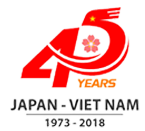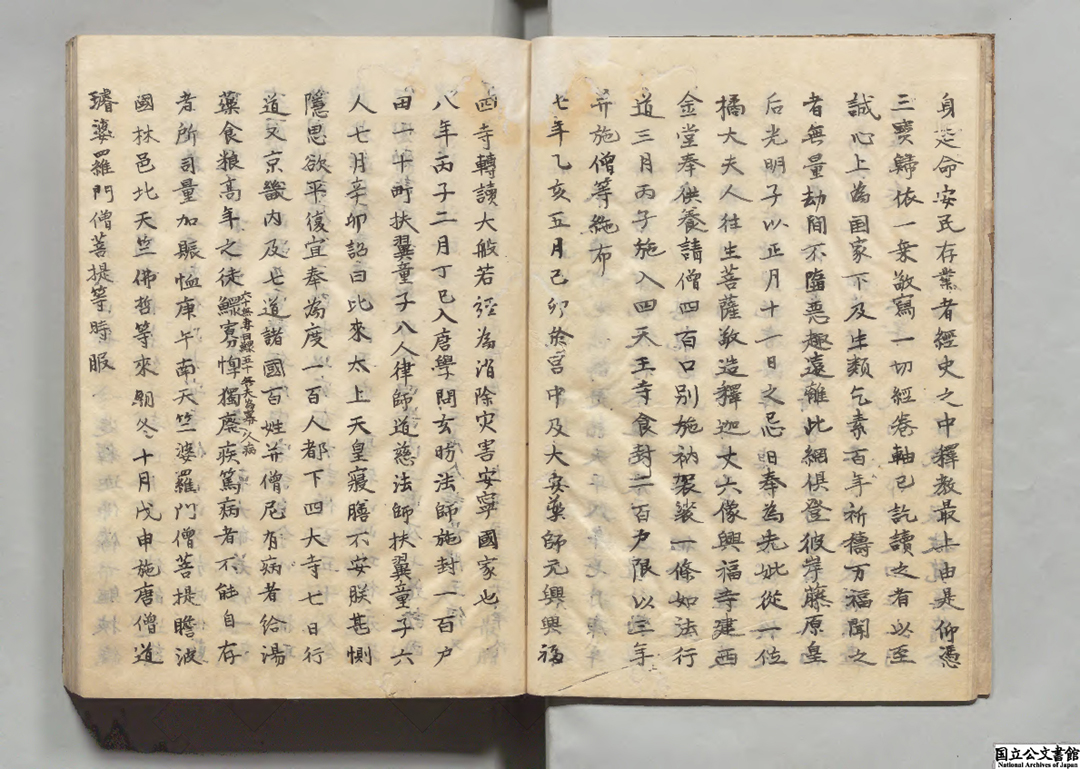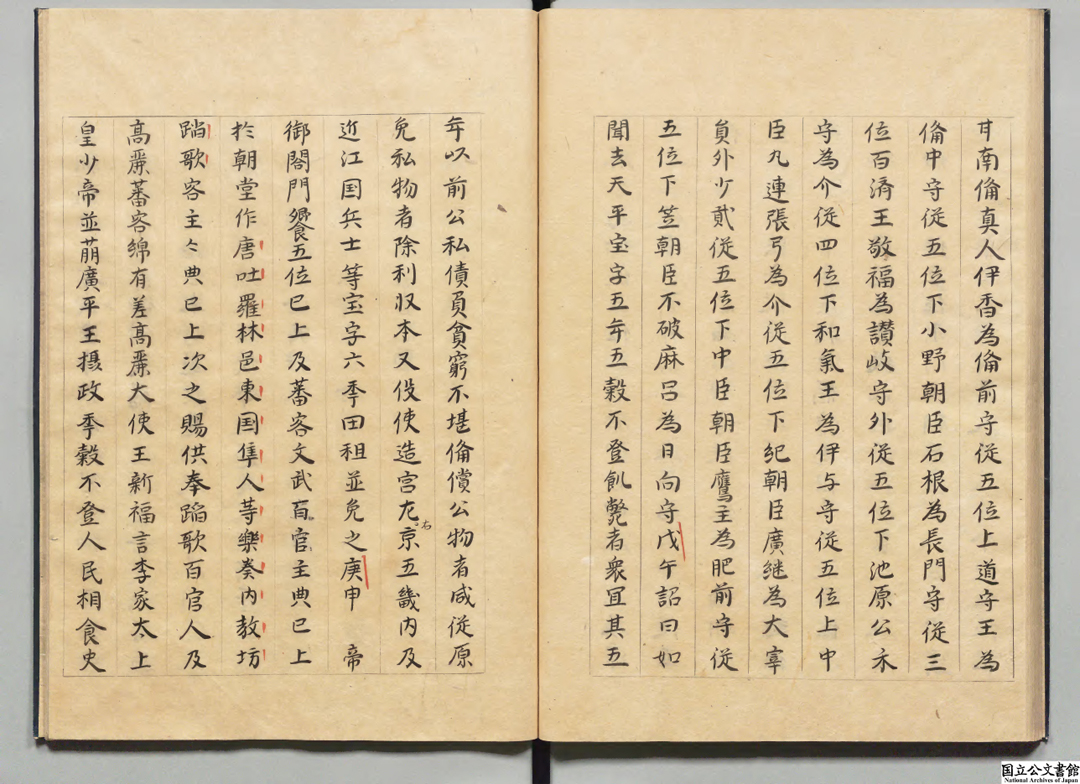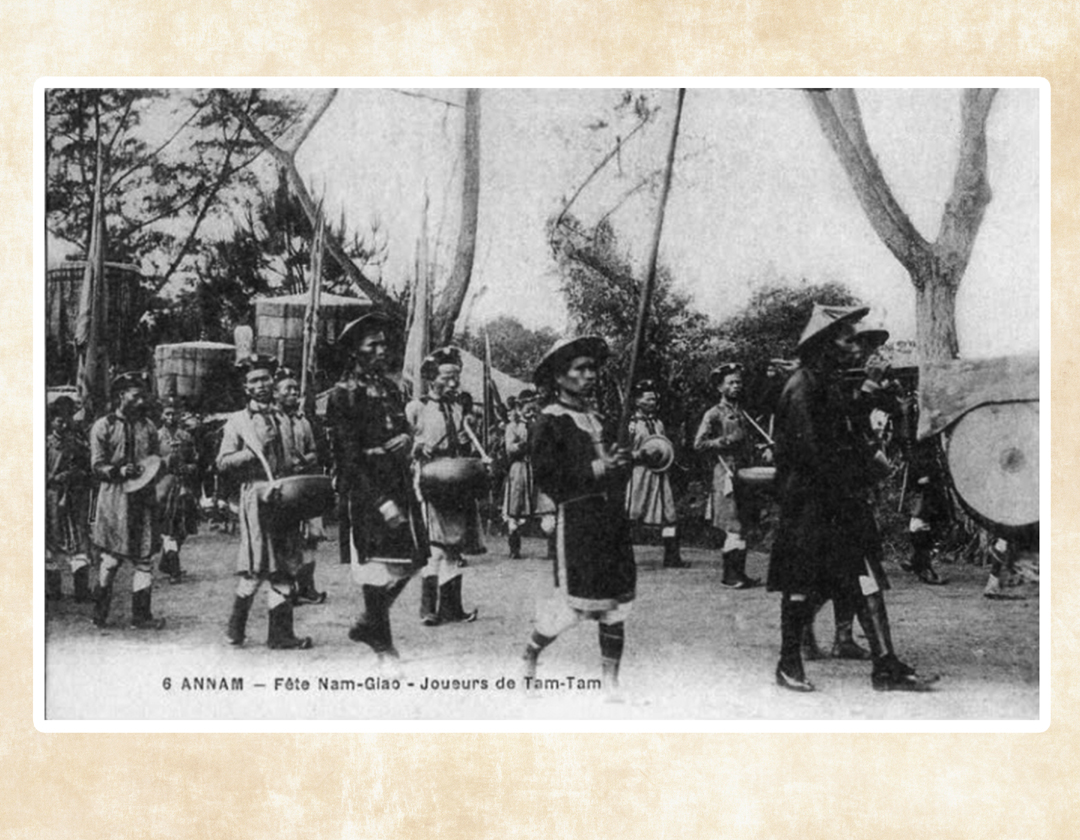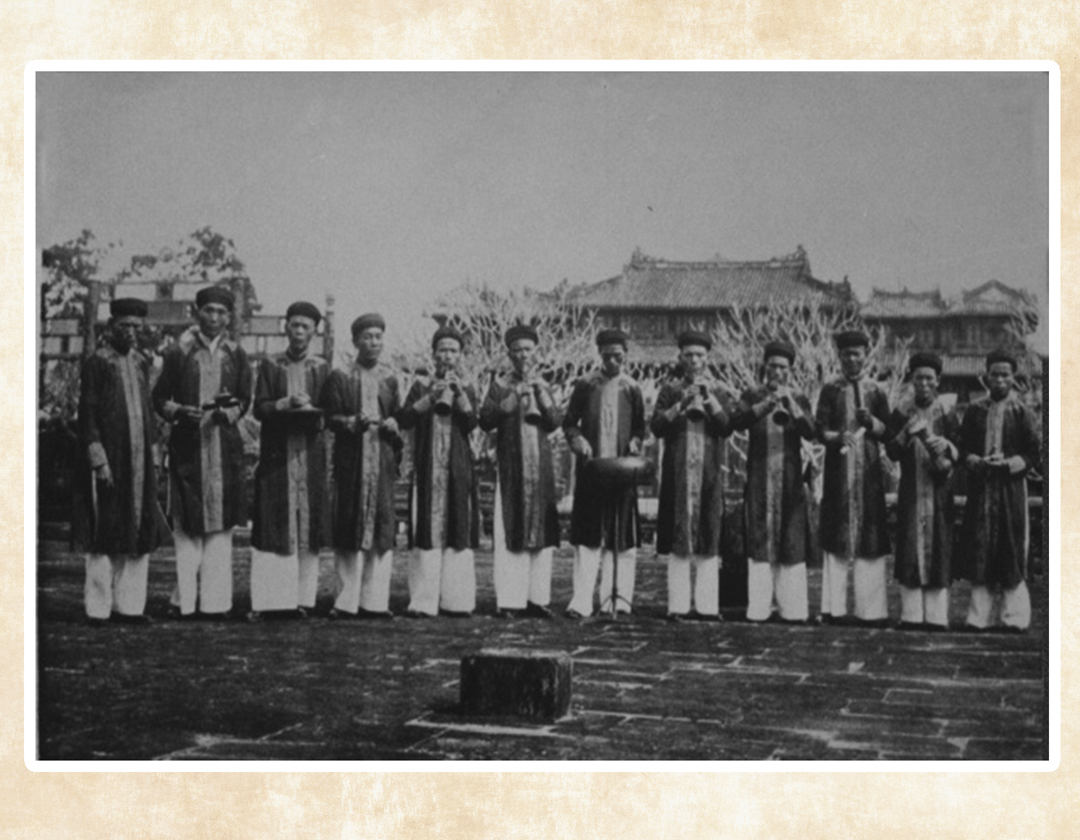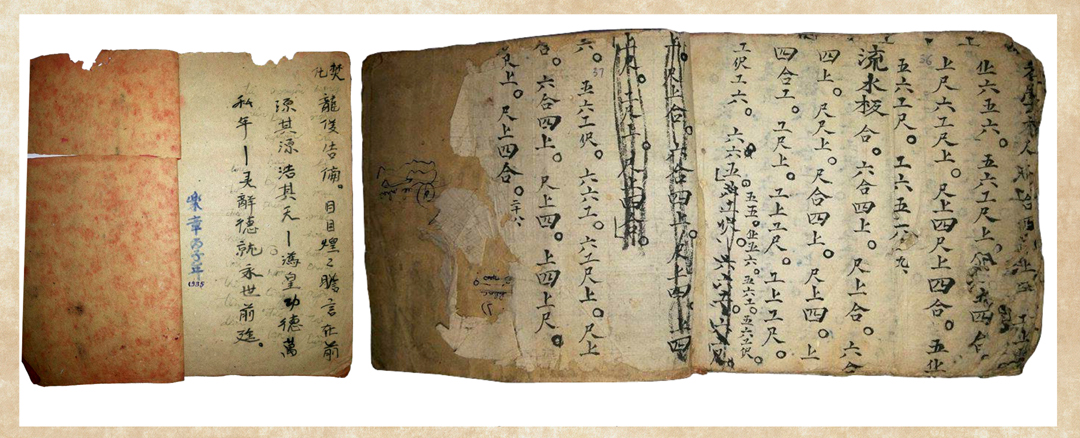I. Early Associations
Rinyu-gaku (Rinyu Music)
Rinyu-gaku is a Japanese Bugaku or a composite ritual art comprising orchestral music and dance. Rinyu-gaku is said to have been introduced in the 8th century by a monk named “Buttetsu” who came from Rinyu (Chăm Pa), a region that extended across the coast of what is today central and southern Vietnam. As a part of the Gagaku (a generic term that refers to Japanese traditional court music), the Bugaku is divided into two forms: Tang music from China and Koma music from the Korean Peninsula. Rinyu-gaku was integrated into Tang music by around the 9th century, and this ceremonial practice has been performed in the Japanese Court and Buddhist temples for 13 centuries. Although the connection between Rinyu-gaku and the current Vietnamese court music is not established, Rinyu-gaku as it exists today consists of eight songs that are well-known among the current Gagaku songs.
In the meantime, in 2009, the current Vietnamese court music was registered by UNESCO as an Intangible Cultural Heritage.
This section introduces records relating to Rinyu-gaku, which is a symbol of the cultural exchange between Japan and Vietnam in ancient times.
1. Todaiji Yoroku
The Todaiji Yoroku is a compilation of records relating to the Todaiji Temple. The original was edited in the early 12th century, and Kangen, a Todaiji monk, rearranged the text, added some content, and completed the manuscript. Kangen’s original version has disappeared. The book introduced here was transcribed in the early modern times and was donated in the Meiji era by an aristocrat family named Bojo to the Cabinet Library, which is currently a part of the collection of the National Archives of Japan (NAJ).
The first chapter of the book records the history of the establishment of the Todaiji Temple and states that a monk named Buttetsu from Chăm Pa came to Japan in 736 with an Indian monk named Bodhisena. The latter subsequently conducted the Eye-opening Ceremony (completion ceremony) for the “Daibutsu” (a giant statue of Buddha) in the Todaiji Temple. In addition, Buttetsu is said to have introduced the Rinyu-gaku to Japan. Not much more is known about his life and career; however, he is described in the Genko Shakusho (Biographies of Eminent Monks) as a merciful and great monk with magical powers, who had dialogues with a sea dragon.
2. Shoku Nihongi
Although the Todaiji Yoroku mentioned above was edited after the 12th century, the Shoku Nihongi introduced here is the compilation of the imperially edited Japanese chronicles completed in 797. It encompasses the reigns of nine emperors over a 95-year period spanning from the succession of the emperor Monmu in 697 to the end of the period of emperor Kanmu’s rule in 790. This book follows the second oldest Japanese chronicle, the Nihon Shoki. Transcripts of this account created by a monk named Bonshun were donated to Ieyasu Tokugawa in 1613. Subsequently, they became a part of the collection of the Momijiyama Library, the Tokugawa Shogun’s repository of books.
This part of the text describes that the Emperor at that time, Jun’nin, held a welcome party for officials ranked fifth and higher and for foreign visitors, and entertained them with Rinyu-gaku as well as other music such as Tang and Tora. This narrative is the first among the Japanese chronicles to refer to the Rinyu-gaku. Presuming the period of editing, we note that the Rinyu-gaku had been introduced to Japan by the end of the 8th century at the latest.
3. Court Music Orchestra at the Nam Giao Sacrifice (Beginning of the 20th Century)
This photo depicts the court music orchestra at a Nam Giao sacrifice taking place at the beginning of the 20th century.
Court music in Vietnam(Nhã nhạc) refers to a broad range of musical and dance styles performed at anniversaries, official receptions, royal parties, etc. Under the Nguyễn Dynasty, court music spanned various genres: Giao Nhạc, Miếu Nhạc, Ngũ Tự Nhạc, Đại Triều Nhạc, Thường Triệu Nhạc, Yến Nhạc, Cung Nhạc (or Cung Trung Nhạc).
Giao Nhạc was performed at the Nam Giao sacrifice that was held to worship Heaven and Earth as well as other important deities. In feudal times, this ceremony was the most significant of the rituals, and it was originally held annually in spring to pray for peace, prosperity, and favorable weather. From Thành Thái emperor’s reign and afterwards, it was held once in every three years for financial reasons.
Nam Giao esplanade, where Nguyễn emperors used to come to give offerings to the gods, was built in An Ninh village in 1803 under Gia Long’s rule before being moved to the southern area of the Imperial City (now within Trường An ward, Hue city).
Large-scale orchestras (Đại Nhạc) usually performed in great ceremonies like Nam Giao with drums, saxophones, and some other popular percussion instruments.
4. Royal Orchestra Performing in Front of the Thái Hòa Palace
Court music (Nhã nhạc) is a traditional music style of Vietnam that has great artistic value. It was usually performed by a large number of talented musicians selected throughout the country. The photo introduced here is the royal orchestra performing in front of Thái Hòa palace. The musical instruments depicted include the drum, the bamboo tocsin, the saxophone, etc.
The Thái Hòa palace was among the most important constructions of Hue Imperial City from where Nguyễn emperors had ruled the country for over a century. According to many researchers, the name Thái Hòa bears a profound philosophic meaning that pertains to the supreme harmony between yin and yang, and between human beings and nature. According to this concept, once our life achieves harmony, all relationships in the universe can be strongly developed in peace and prosperity. The construction of the palace started in February 1805, and the structure was finished in October of the same year.
5. Court Music Lyrics and Scores
Court music or Nhã nhạc in Vietnamese, performed at festivals, religious ceremonies, and some special events in Vietnam and at the royal courts of some of its neighboring countries, literally means “elegant music.” In Vietnam, court music appeared in the 15th century and reached its pinnacle of development during the rule of the Nguyễn Dynasty (1802–1945). At that time, the genres that comprised court music were rich and diverse with a wide variety of lyrics and musical scores composed by the Ministry of Rites in accordance with the event and the context.
These are extracts from two manuscripts: the one on the left records lyrics used in court rituals, and the one on the right is a transcript of musical notations.
This record was collected by the Hue Monuments Conservation Centre in 2008 from a court music artist named Lữ Hữ Thi. It is now preserved at the Hue Traditional and Royal Arts Theatre under the supervision of the Hue Monuments Conservation Centre.



